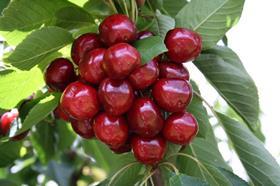
Fruit Growers Tasmania has defended the island state’s freight equalisation scheme (TFES), insisting it does not provide growers and exporters with an unlawful economic advantage in key international markets.
The response stems from claims made by Simon Hegarty, chief executive of the New Zealand’s Horticulture Export Authority, and Mick Ahern, chief executive of Onions New Zealand, who have suggested the scheme is being used as an unlawful export subsidy.
The crux of Hegarty and Ahern’s argument, penned in Horticulture New Zealand’s industry-wide publication The Orchardist, hinges on an amendment made to the TFES last year, which saw its reach widened to incorporate products destined for export.
“The previous scheme only applied to products shipped to the mainland for consumption on the domestic market,” Hegarty said. “Since the start of the expanded scheme on January 1, 2016, Tasmanian exporters have been cashing in on a A$700 Twenty-foot equivalent unit (TEU) container subsidy for products destined for export markets.”
In their comment piece, Hegarty and Ahern cited the World Trade Organisation’s (WTO) Agreement on Agriculture, which defines export subsidies as “subsidies contingent on export performance.” Export subsidies are illegal in the eyes of the WTO.
The pair also made reference to one of six practices outlined in article nine of the agreement, which considers export subsidies as: “internal transport subsidiaries applying to exports only, such as those designed to bring exportable produce to one central point for shipping.”
Hegarty and Ahern therefore believe the TFES’ current form allows suppliers to violate this particular article, as Tasmanian exporters are reimbursed for shipments made to Melbourne under the scheme, when the product is destined for markets outside Australia. In turn, they suggest this places Australia in breach of its WTO obligations.
Phil Pyke, business development manager of Fruit Growers Tasmania, takes umbrage with this notion, suggesting the export extension was rightfully added to the TFES to ensure Tasmanian suppliers could compete on a level playing field, as they don’t have road or rail access to the Australian mainland, nor access to international airfreight services from their state at present.
“The TFES is completely unrelated to any price cutting in Asia or any other market,” Pyke stated. “It is incorrect to draw the correlation that the TFES is anything more than an internal freight equalisation subsidy for domestic and export bound freight between Tasmania and Victoria.”
Citing market reports, Hegarty and Ahern suggested Tasmanian cherries were being discounted by as much as US$15 per carton (5kg) compared with New Zealand cherries in Asian markets earlier this year.
Overall, Tasmanian cherry producers received the highest average prices over the 2015/16 season. Pyke said this was achieved through high fruit quality and the lower value of the Australian dollar, not discounting.
“The price of cherries in the Asian market is totally determined by supply/demand and quality of product,” Pyke explained. “There is every chance the New Zealand staff were looking at boxes of counterfeit cherries as there is no confirmation across industry of Tasmanian cherries being sold at US$15 per 5kg below New Zealand cherries. This would represent a loss to many of the smaller producers.”



